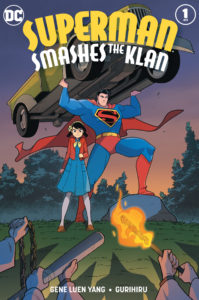
See, Superman Smashes the Klan is actually a tough comic to classify, melding as it does elements from different genres into one deep and immersive story. There are quite a few touches of historical fiction. As noted above, this book is set in 1946 amid the aftermath of WWII. The Superman in it is the Superman of the character’s early stories during that time, the Superman with the black background behind the emblazoned logo on his chest and a limited power set with which he runs across power lines rather than flying.
As writer Gene Luen Yang notes in his essay at the end of this first chapter, Superman Smashes the Klan is also inspired by a 16-episode story arc first heard on the 1946 radio program, The Adventures of Superman, which at that time was the most popular show in America (it’s also the show that gave us both Jimmy Olsen and Kryptonite, which factor prominently into this book…a nice tip of the hat to fans of the character, to be sure). In that radio story arc, a Chinese-American family moves to Metropolis and is harassed by the Klan of the Fiery Kross, stand-ins for the real-life Klu Klux Klan. That description is essentially the plot for this comic as well. So, with all that in mind, it feels more apt to think of this story as something like meta historical fiction, run as it is through the modern filter of everything that has happened with the Superman character and our own society in the past 70 years.
The other genre evident within these pages is semi-biographical literary fiction, which Yang again elaborates on in his concluding essay, doing so by sharing a heart-rending story from his own childhood in which a racial epithet was used against him in school by a classmate. He also includes a photo of himself as a kid with his younger brother, drawing a connection to the brother-sister duo at the heart of this story. It’s these personal and metafictional touches that elevate the first act of the book so far past being a story that simply has a strong moral and a history lesson about racism for young readers.
Superman Smashes the Klan has all of that, to be sure, but it’s also an immersive, personal, and honest look at the history of both our nation and arguably its most emblematic fictional creation, Superman. It’s a smart comic with rewards for readers of all ages. The younger set will likely enjoy the adorable relationship between the brother and sister (they fight and make up regularly through apologies shared via paper plane). While the older set can lose themselves in the layers of influences culled from comics and real-world history. Essentially, Superman Smashes the Klan walks that fine line between being geared for kids yet also so clever that it entertains adults — let’s call it Pixar Territory.
That’s the 20,000-foot view. Taken on its own merits as an individual effort of comics storytelling, Superman Smashes the Klan is an entertaining and lively story driven by fully-realized characters…with famous caricatures like Superman, Lois Lane, and Jimmy Olsen moving among them. I mentioned earlier that the story incorporates both Kryptonite and Jimmy Olsen, touches first added to this mythos by the radio show. Well, not only do Jimmy and the glowing green rocks appear — they’re also absolutely integral to what this story is seeking to accomplish.
The Kryptonite first makes it appearance in the book’s opening action salvo, when Superman battles a nazi in a mechanical suit and eventually discovers Kryptonite is powering it. At this point, Superman has apparently never before encountered the substance, which diminishes him physically throughout the first act and also makes him acutely aware of his own status as an immigrant (a refugee, really) to the Earth. It’s a subtle and entertaining way to incorporate this theme, making it both nuanced and a central obstacle for the hero we are all most familiar with in these pages.
Jimmy, meanwhile, plays the part of the welcoming neighbor, a kind figure who greets the Chinese American brother-sister duo at the heart of the story when their family moves from Chinatown to a different neighborhood in Metropolis. Jimmy comes off as well-meaning, used as he is as a contrast to one of the first chapter’s antagonists, a young boy who idolizes Superman yet is involved with the Klan because of his hateful uncle. I don’t want to spoil one of the most effective character moments of the book, but I will note that that character is not reduced to hate. Yang and his collaborators’ story humanizes him as well, which makes the story all the more immersive.
Gurihiru, which is an illustration team based in Japan, is also as gifted a visual storyteller as they could have found for this comic. The aesthetic here is firmly in Pixar Territory as well. It’s simple enough to draw in the little ones (and bright too), yet equally as capable of the scarier and more emotional scenes. I especially enjoyed the work they did in the sequences where Superman was feeling the effects and aftereffects of the kryptonite, which were conceptually difficult to pull off in a comic. Gurihiru nails them.
Overall, Superman Smashes the Klan is my favorite sort of DC Comic, one that expertly draws from the immense history and iconic status of the DC characters. It also plays to its creators strengths, specifically Yang’s. While writing for DC Comics, Yang has told some great stories with Superman, specifically his run of New Super-Man, which was largely set in China. Yang, however, has not quite hit the heights with those stories of his breakout 2006 book with FirstSecond, American Born Chinese. After reading this first chapter, Superman Smashes the Klan feels poised to change that.


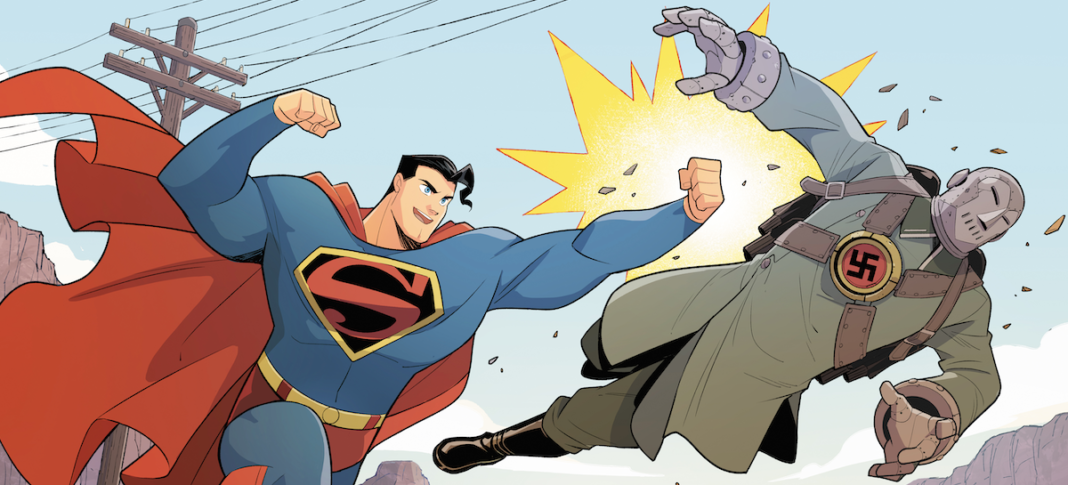
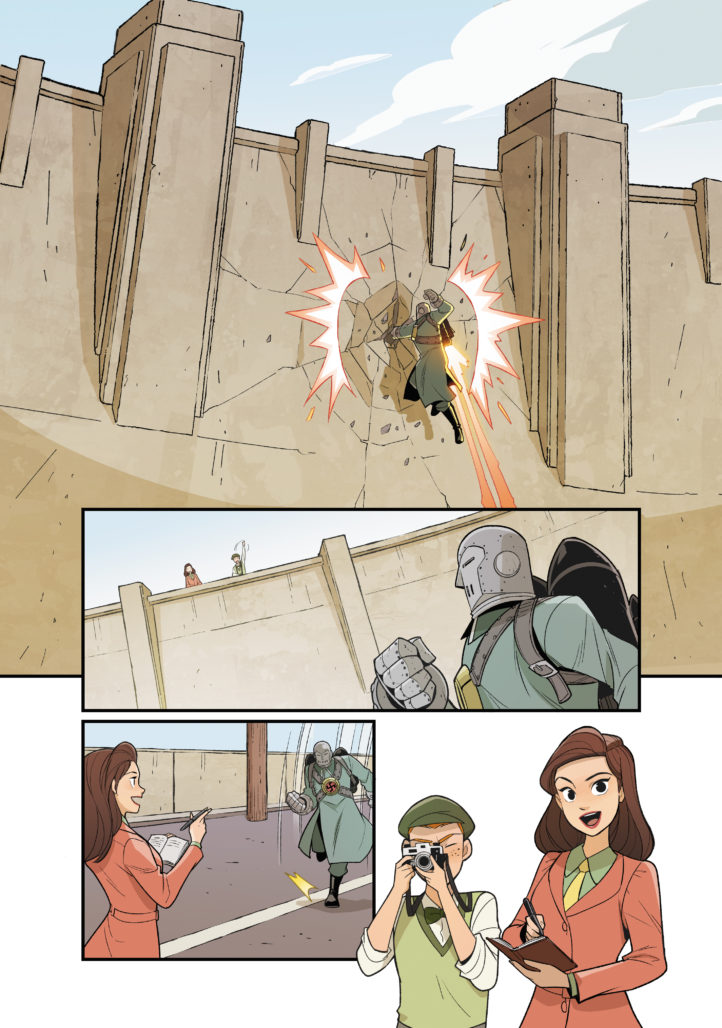
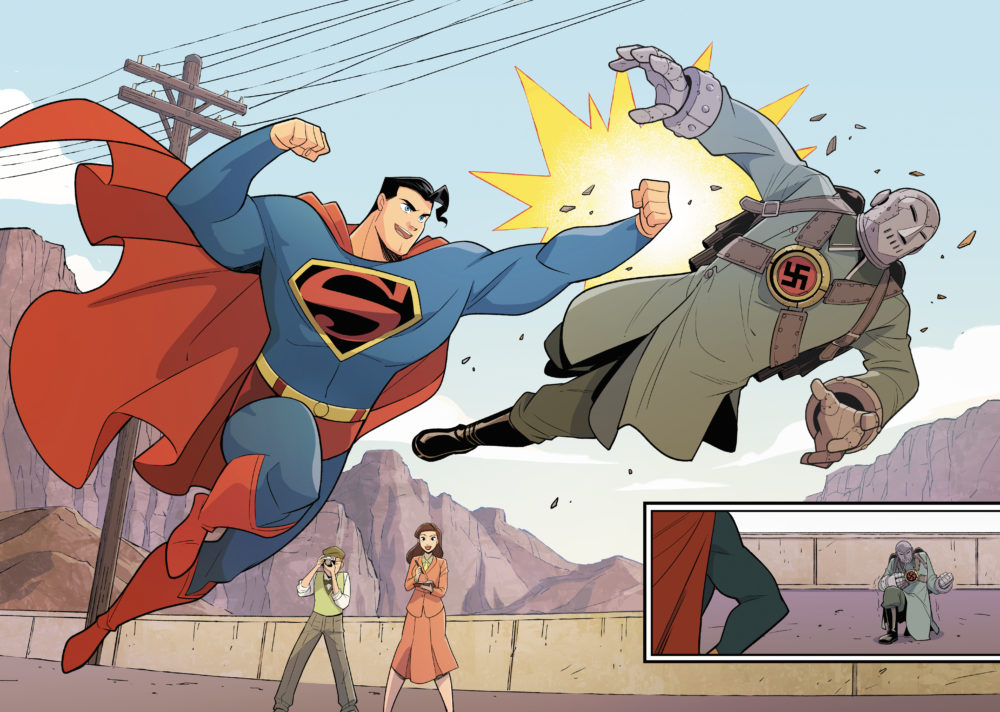
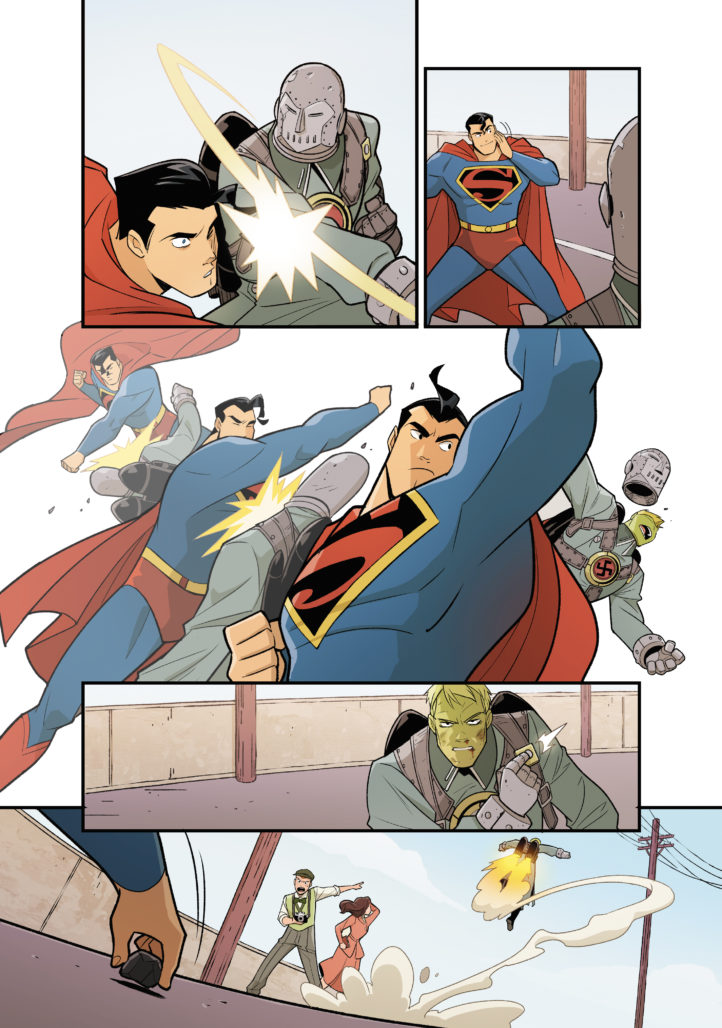
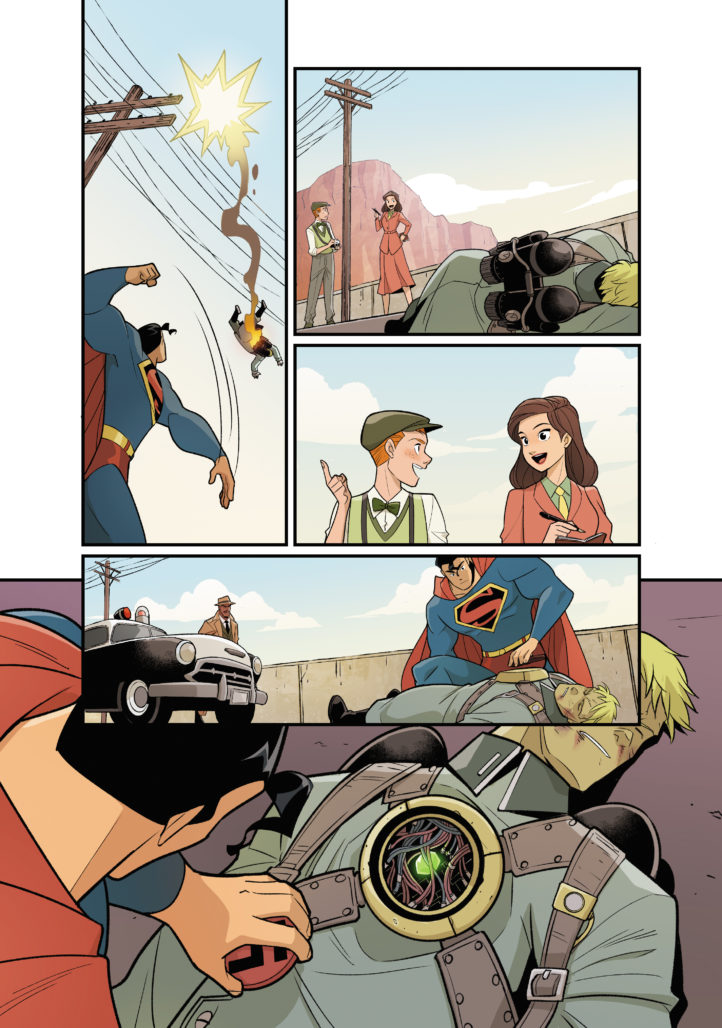
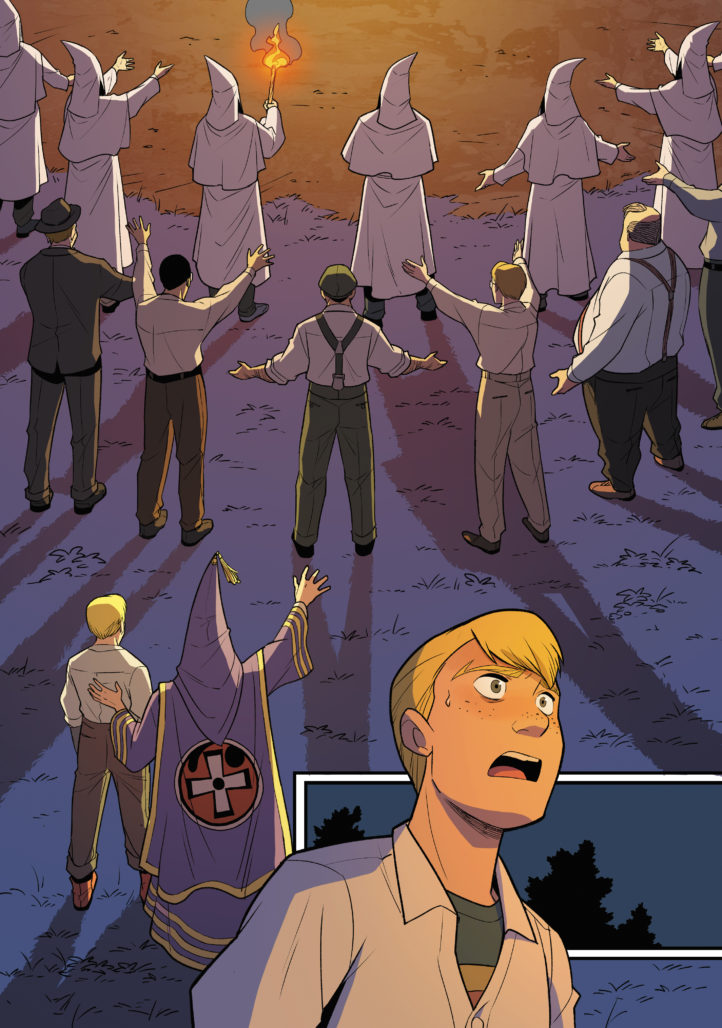





Comments are closed.